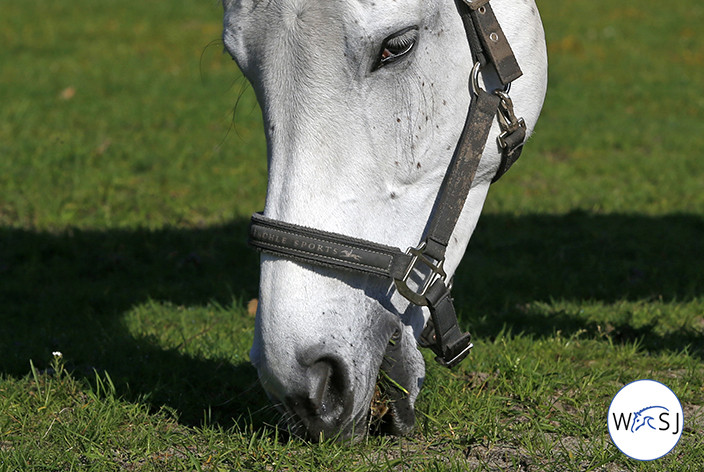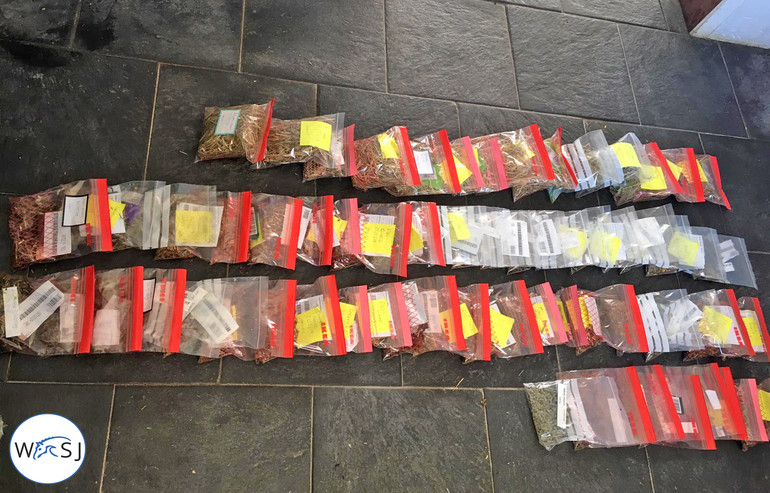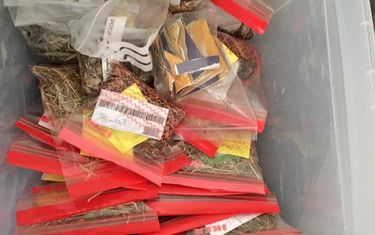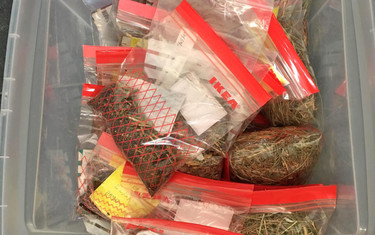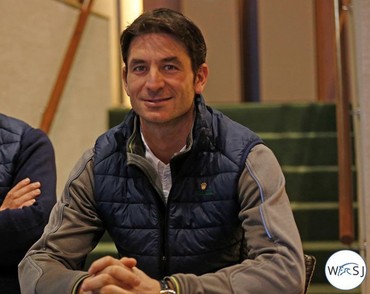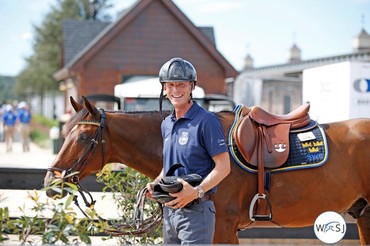In May 2019, the FEI released a warning regarding synephrine – a banned substance on FEI’s Equine Prohibited Substances List. The warning, that can be read in its full version via this link, included the following information:
"Additionally, it is recommended that samples are kept of batches of hay, feed and supplements given to competition horses to enable a thorough investigation to take place should the horse test positive for synephrine."
“Measures that can be taken to prevent positive findings include using reputable suppliers of hay, feed and supplements, checking the horse’s environment for plants containing synephrine (…)”
The advice on sampling hay, food and supplements as well as checking the horses’ natural environment can also be found in the FEI recommendations on contamination prevention, which can be read via this link:
“HAY, FEED AND SUPPLEMENTS”
“3. Keep samples of hay, feed, supplements and any corresponding batch numbers
This enables a thorough investigation to be carried out should contamination be suspected."
“THE HORSE'S ENVIROMENT”
“1. Check for environmental contaminants
Fields and/or surrounding land may contain plants that could lead to positive EADCM tests, e.g. poppies, crocuses, nightshade and lupins. Horses living in areas of the world in which high coffee production takes place are at risk of contamination from caffeine, paraxanthine, theobromine, theophylline. It is advisable to consult with local authorities or experts to check what substances may be present in your region.”
Additionally, the FEI also writes that supplement use must be recorded in the horse’s FEI Medication Logbook:
“The FEI provides a warning regarding the use of supplements and supplement use must be recorded in the horse’s FEI Medication Logbook.”
If the FEI recommendations above are to be implemented in international competition stables, riders and their staff need knowledge about what is required when it comes to practical routines. That’s why World of Showjumping asked the FEI:
- How much of hay, food and supplements is required in each sample?
- In some stables, larger bales (300-400 kg) of hay are used – should several samples be taken depending on the size of the bale?
- If using a liquid, rather than a pellet or powder supplement – how can this best be sampled and stored?
- How should each sample be labelled?
- How should the samples be stored (under what conditions)?
- For how long should the samples be stored after they are collected?
- What would be the legal consequences if there is a positive test, and the recommendations have not been followed?
While waiting for the answer, the WoSJ-team decided to test the sampling recommendations in an international competition stable with 24 horses competing at two to four-star level on a weekly basis. The menu in this stable consists of two different types of hay, seven different types of feed and horses are fed additional supplements depending on their needs.
After two weeks of sampling each bale of hay (both big 300-400 kg bales and smaller plastic packed bales), every bag of food opened at home or at shows, as well as every supplement, we were left with 37 samples of food, 14 samples of hay, as well as 9 samples of supplements – which would total it to an approximate 120 samples per month. Keep multiplying this throughout the year, and apply the numbers to an even bigger stable, and the question quickly becomes: Are the recommendations reasonable or unrealistic?
The International Jumping Riders Club and World of Showjumping asked some of the world's best riders about their opinions on the issue of contamination, as well as the FEI recommendations on contamination prevention.
KENT FARRINGTON (USA) SPEAKING TO THE IJRC:
STEVE GUERDAT (SUI) SPEAKING TO WoSJ:
“I think this is a general problem. We have more and more problems with contamination, which is something very different than doping. I think it is really about time that the FEI takes the responsibility to protect the athletes in the sport. It’s quite clear what is contamination and what is doping, and I don’t understand how a contamination case can make any rider’s life a nightmare.
In a contamination case, you have to prove something you have no control over. We cannot control what our horses are doing at all times, what they lick, sniff, touch. It is a nightmare as a rider winning a class being 100% certain that your horse is clean, but not knowing until the test results come back if you will be able to keep your win or not – because you don’t know if someone stroked your horse on the nose while you were not there or if they ate grass at the show that contained a banned substance.
If you take the FEI recommendations in one hand and the stable security in the other, the latter is hundreds of thousand miles away from what it should be. We get to a show, we are signed up for a set of boxes in the stables – what can we do if we think it’s not up to clean sport standards? Disinfect the stables, then wait twelve hours with the horses on the truck? We get the hay, the straw, the shavings at the show – should we take a sample, send it to the laboratory for an analysis and wait for the result until we know 100 % that it’s safe to use for our horses? Even at home, I cannot take a sample for every single bale of hay, straw and shavings I have in the stable with twenty horses. It makes no sense. It is just not possible to implement these recommendations.
We are also talking here about contamination that has absolutely no effect on performance, it has no impact – bad or good. How come we have to worry so much about something that has no enhancement on the horse’s performance, and that we cannot even control?
If the FEI doesn’t find a better way to handle the contamination problem than this, then it will go against the welfare of the horses. It means the horses will have to be kept within four walls for 22 hours a day, and only come out when they are ridden. This is definitely not what I want for my horses. The horses need to be allowed to be horses.
Still, this is what we have sleepless nights over and the FEI needs to do something about it!”
HENRIK VON ECKERMANN (SWE) SPEAKING TO THE IJRC:
PEDER FREDRICSON (SWE) SPEAKING TO WoSJ:
“With the current FEI recommendations, you will always have to be on guard as the person responsible. It takes nothing to test positive anymore, a pat from a human hand or a sniff from another horse can be enough. If you are at a FEI show and stable your gelding next to another rider’s mare that is on Regumate, you are in danger. If the two horses play nose to nose over the wall of the box, that could be all it takes to deliver a positive test.
If you no longer can feel safe to turn your horses out in a field or let them grass at the show, we have a big problem in my opinion. Grass is what horses are supposed to eat, and FEI recommendations that advise riders to check their horses’ environment for plants containing banned substances is in my opinion going too far – especially taking into consideration that horses competing at international level most of the time are on the road moving from one environment to the other. You have to put the horse first, and the welfare of the horse has to have priority. After all horses are horses, and with that in mind I think the Equine Anti-Doping and Controlled Medication have been taken a bit too far with these recommendations and warnings.
In my opinion, the FEI really has to think about where they want to go with all this. We cannot have a sport where the riders and their support personnel never feel safe, and always have to look over their shoulder. I think it’s time to discuss thresholds and establish what is relevant and irrelevant amounts in a positive test.”
SCOTT BRASH (GBR) SPEAKING TO THE IJRC:
Text © World of Showjumping
Videos © International Jumping Riders Club
Photos © Jenny Abrahamsson for World of Showjumping
No reproduction without permission, copyright © World of Showjumping



